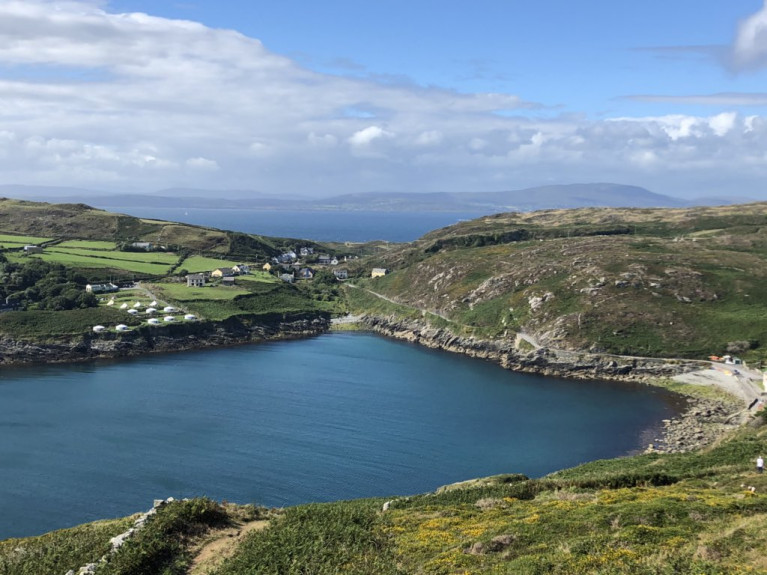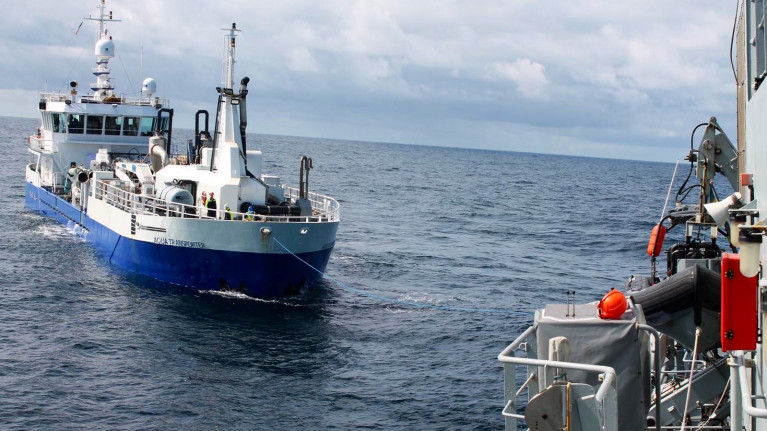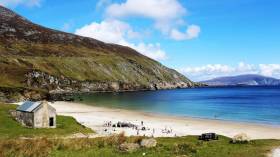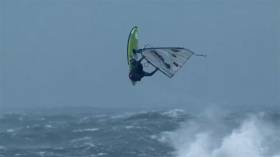Displaying items by tag: Wild Atlantic Way
Tourism is now worth €3billion per year on the Wild Atlantic Way, an increase of 59% on 2013, according to Fáilte Ireland.
This growth has contributed to the creation of an additional 35,000 jobs, with tourism now supporting 121,000 jobs across the region, the tourism body says.
While Fáílte Ireland says it does not yet have a detailed breakdown which might illustrate the impact on watersports and marine leisure, one of its testimonials for its report comes from Jim and Maria Kennedy of Atlantic Sea Kayaking in West Cork.
Kennedy says he was proud to be one of the Wild Atlantic Way’s first ambassadors, and says their company has benefited “with much increased international visitor numbers”.
A report published by Fáílte Ireland and released at Meitheal, its two-day trade event underway in Kerry, says that nearly 2 million more visitors visited the Wild Atlantic Way in 2023 compared with 2013.
Speaking at Meitheal, Minister for Tourism, Culture, Arts, Gaeltacht, Sport and Media Catherine Martin said the 2,500-kilometre route “along our rugged Atlantic coast…is now a household name and cements Ireland’s reputation as a must-visit tourism destination”
“ I commend Fáilte Ireland and Tourism Ireland on their work in driving this success over the last 10 years,”she said.
Fáílte Ireland chief executive Paul Kelly said: “We are proud to mark the 10th anniversary of the Wild Atlantic Way at Meitheal this year and reflect on a brand that has had a truly transformative impact on the economy of the west coast.”
“Tourism is now worth €3billion per year to the region. This growth has contributed to the creation of an additional 35,000 jobs in local communities, with tourism now supporting 121,000 jobs across the region. Domestically, the Wild Atlantic Way is our most popular region with 51% of all domestic tourism revenue being generated there,”Kelly said.
“When we compare this internationally, based on the most recent data available, we see that inbound travel to Ireland grew by 45% between 2013 and 2019, well above the Northern European average of 25%. And the Wild Atlantic Way was a key contributor to this success with overseas visitor bednights in the region growing by 60% across this period,” he said.
Tourism Ireland chief executive Alice Mansergh said her organisation “ loved making the Wild Atlantic Way famous overseas".
“ We captured behind-the-scenes interviews with the stars of Normal People, Banshees of Inisherin and Star Wars, as they filmed along the route, inspiring screen tourism,” she said.
“ Tourism Ireland has co-produced 22 food and travel focused TV shows highlighting the Wild Atlantic Way, reaching 450 million in viewership around the world, with hosts like Donal Skehan and John Torode,” Mansergh said.
“ Bringing journalists to experience the scenery, heritage and culture along the route has led to coverage in publications like The Guardian, The New York Times and National Geographic, adding up over the years to an ‘equivalent advertising value’ of over 1 billion euros,” she said.
“As we mark 10 years, we’ll be showcasing what the Wild Atlantic Way has to offer across 14 markets around the world, through a mix of TV, digital and social channels,” she said.
“ We invite everyone to get involved in this special birthday, sharing their favourite photos of the route to wish ‘Happy 10th Birthday to Ireland’s #WildAtlanticWay’,” she added.
Valentia Island Ferry Returns With Seasonal Service Today
In scenic west Co. Kerry the Valentia Island car-ferry started today with the resumption of the seasonal service which runs from April to October, writes Jehan Ashmore.
The ferry service which is near Cahirciveen on the Iveragh Peninsula, connects Renard on the mainland to Knightstown on the east of Valentia Island, part of the Wild Atlantic Way.
Operating the route is Valentia Island Ferries with their God Mets On III that plies on the five-minute route which is based on a continuous shuttle service throughout the day.
Domestic and tourist vehicles using the 43m double-ended ferry include cars, MPV's, motorhomes, campers, mini-buses, cars with caravans and trailers, commercial vans, motorbikes. In addition to conveying bicyles and foot passengers.
The veteran vessel built in 1963 had originally served in The Netherlands across the River Maas until replaced by a bridge. Since 1996 the ferry has operated to Valentia which is approximately 11kms in length and 3 kms wide.
The 95 gross tonnage ferry runs the first and final crossings each day from Knightstown.
It was here in 1858 when HMS Agamemnon landed the first transatlantic telegraph cable, linking Knightstown to Hearts Content Newfoundland, Canada.
To the west of Knightstown at Cromwell Point is Valentia Island Lighthouse, the most westerly harbour light on the island of Ireland. It is a tourist attraction and is open to bookings.
On the middle of the island is Geokaun Mountain and cliffs, the highest point of the Island with stunning panoramic views of Kerry which have been designated as a Discovery Point on the Wild Atlantic Way.
A road runs along about two-thirds of the island from Knightstown to a bridge on the south of the island. The bridge which opened in 1970 connects to Portmagee on the mainland.
Prior to the completion of the bridge, a passenger/cargo ran between Reenard Point and Knightstown.
EU-Funded Study of Wild Atlantic Way Recommends Developing "Niche Marine Tourism" Options
A new study of the Wild Atlantic Way recommends development of “niche marine tourism” options along the coastal route.
Visitors taking part in marine-related activities tend to spend more and stay longer than average, and so regional authorities and tourism agencies should provide supports for these “offerings”, the study says.
It also recommends improving infrastructure, and identifying and developing “the unique experiences and draws” that “entice visitors to stay longer”.
The research was conducted for the Moses project, an EU multinational research initiative involving eight partners representing the five member states of the Atlantic area.
Funded through the EU Interreg programme, the project aims to further the EU’s Blue Growth strategy in five “focus maritime areas” with “the potential to accelerate learning across Europe”.
"Visitors taking part in marine-related activities tend to spend more and stay longer than average"
The study says policies aimed at extending the tourist season should be developed, and environmental pressures and damages should be identified and reduced “early”.
It recommends reducing the emphasis on day trips - where tourist money is often diverted from local residents.
It says efforts should be made to ensure employment is local, and cultural and traditional experiences are supported.
It recommends encouraging ICT uptake in sustainable tourism trail usage.
It also says tourist operators should be encouraged to shorten their supply chains by using locally sourced inputs.
It also says these operators should also be encouraged to “consider their waste management strategies and use of alternative materials”.
A team at NUI Galway’s Socio-Economic Marine Research Unit conducted the research between 2018 and 2020.
The Northern & Western Regional Assembly (NWRA) was also a partner in the two-year study.
Islands of the Wild Atlantic Way Among Seven of the Most Beautiful Around Ireland & UK
Islands along the Wild Atlantic Way not surprisingly are among seven in a list of islands within Irish and UK waters which draw attention as there’s something about crossing the sea that makes a holiday feel proper.
As BreakingNews adds staycations are all the rage right now for obvious reasons, but cars and trains lack the intrepid glamour of boats and planes, and when you visit an island it feels like you’ve entered a new and exciting ecosystem.
Island hopping begins at home. Here are some awesome islets that can help save your holiday, on both sides of the Irish Sea…
...where Cape Clear off Cork in the south west, the Aran Islands in Galway Bay and Claire Island further to north along the Wild Altantic Way in Co. Mayo proudly feature among the seven islands.
So take a snapshot read of these islands and beyond to those in UK waters by clicking here.
Potential Ecological Disaster Averted by Navy off Galway Coast
Off Ireland's west coast a potential ecological disaster was averted when the Naval Service intervened to prevent a cargoship laden with oil from crashing against rocks.
Aqua Transporter, reports Irish Examiner, was carrying 32,000 cubic tonnes of fuel and two cubic tonnes of lubricating oil, had lost power and was drifting towards rocks. If it had collided, its contents would have caused a major pollution incident along the Wild Atlantic Way.
The Coast Guard contacted the Naval Service after receiving a request for help from the ship's Norwegian skipper, who reported he had lost engine power and was drifting. Fortunately, LÉ Niamh was on routine patrol just a few miles away.
The navy ship, under the captaincy of Lieutenant Commander Claire Murphy, responded to the early morning emergency request on Tuesday to help the cargo ship and its crew of six. It was drifting a few miles off Slyne Head, near Galway.
More about the incident by clicking here.
Afloat.ie adds the Norwegian flagged 60m fish-carrier in recent days departed Rathmullen, Co. Donegal is now docked at the Port of Galway in the Dun Aengus Dock.
Achill Island Beach Rated Among The Best In The World
Keem Bay on Achill Island has made the grade among the 50 best beaches in the world, according to a top travel website.
And as The Irish Post reports, the Co Mayo coastal beauty spot was ranked among the best even of that number, placing just outside the top 10 of Big 7 Travel’s selection.
Keeping company with the gorgeous turquoise waters of the Adriatic and eastern Mediterranean, the West Indies and other breathtaking tropical paradises, we think that’s good going for the Wild Atlantic Way.
#ferries - A new service has been launched by Bus Éireann in partnership with Doolin Ferry Company for people to explore the Wild Atlantic Way, reports GalwayDaily.
The new Route 350 which operates from Galway offers a combined bus and ferry service exploring the sights of the Wild Atlantic Way with tour of the Cliffs of Moher or a day ticket out to Inis Oírr.
Customers can avail of two combined ticket options which each cost €38.50 for both the bus ticket and either a 1-hour ferry tour of the Cliffs or a trip out to Inis Oírr.
The bus route also offers a regular service from Galway, through Doolin and on to Ennis that runs up to six times daily.
Bus Éireann describe the new route as a “great value day trip option to visit Ireland’s most popular tours destinations along the very popular Wild Atlantic Way.”
To read more and where to buy tickets, click here.
Force 10 winds forecast for this weekend will attract eight of the world’s more fearless windsurfers to Ireland’s Atlantic coast for a competition three years in the making.
As BreakingNews.ie reports, the precise date and venue for the Red Bull Storm Chase along the Wild Atlantic Way have not yet been decided, being influenced by where the squalls currently tracking towards Ireland ahead of two major storm systems will make landfall.
But if conditions prove optimal, the brave boarders will take to the big waves — judged on the size of their high-flying jumps, their artistry in the air and their overall style amid winds in excess of 100kmh.
BreakingNews.ie has more on the story HERE.
New Project To Improve Angling Access On River Easkey
#Angling - A new project on the River Easkey in Co Sligo which has improved and developed angling access to the wild salmon river between Sligo and Ballina has now been completed.
The project, which was delivered by River Easkey Angling Association, received support from Inland Fisheries Ireland (IFI) via the National Strategy for Angling Development.
Structures such as footbridges, stiles, and ladders were installed along the river, which is located on the Wild Atlantic Way, while walkway routes on the banks of the salmon and trout fishery were also improved.
The work took place upstream of the famous Workhouse Bridge as part of the second phase of this project which initially involved similar works downstream of the bridge last year.
In total, the project has delivered eight new access points to angling, 13 footbridges ranging from three to four metres in length, and five kilometres of improved trail access.
Sean Canney, Minister of State for responsibility for inland fisheries, said on Wednesday (23 January): “I welcome the continuing efforts of Inland Fisheries Ireland in delivering under the National Strategy for Angling Development in partnership and collaboration with local angling clubs and community groups nationwide.
“Inland Fisheries Ireland committed €23,500 in total to support the Easkey project with €10,000 awarded in 2017 and a further €13,500 granted in 2018.
“I also want to congratulate the River Easkey Angling Association on its excellent development ethos. They are a progressive group that helpfully operates an open policy for holders of a State Salmon License with season and day tickets available for access,” he added.
Suzanne Campion, head of business development at IFI, said: “The River Easkey Angling Association has done fantastic work in developing this area as an angling destination. While completing this project and working closely with our project officers, they have given due diligence to everything from financial and environmental governance to biosecurity considerations ensuring the conservation and protection of this wonderful resource.”
Alan Spencer, assistant secretary of the River Easkey Angling Association, expressed the club’s thanks to Inland Fisheries Ireland’s staff for all their help and support during the project, as well as gratitude to landowners who permitted the club and its contractor access to the river through their property.
Businessman Criticised Report After Doolin Branded Litter Blackspot
#CoastalNotes - Eugene Garrihy a Clare businessman writes The Irish Examiner has criticised the results of a new survey that has labelled Doolin a “litter blackspot."
Mr Garrihy, father of Dancing with the Stars celeb and Fair City actor Aoibheann Garrihy, operates Doolin2Aran Ferries and yesterday described the results of the Irish Business Against Litter litter survey as “grossly unfair”.
This summer, Mr Garrihy’s firm has invested €3m in its operations with the commissioning of the 200-seater Star of Doolin on the Doolin-Aran Islands route.
For further reading click here.






























































